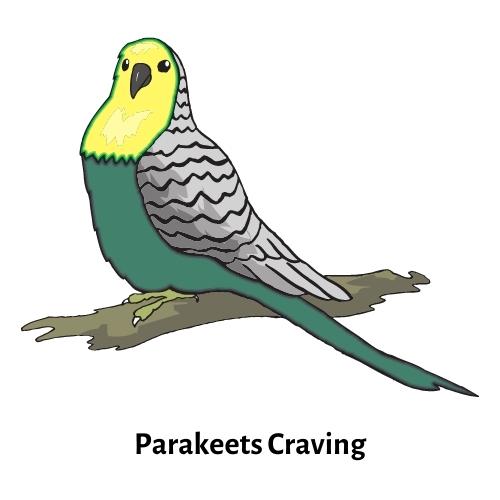
Introduction to the Parakeet World
Welcome to the fascinating world of parakeets! These small, colorful birds are known for their playful nature and vibrant personalities. In this article, we will delve into understanding parakeets, exploring their world, and why they make great pets.
- Understanding Parakeets
- Exploring the World of Parakeets
- Why Parakeets Make Great Pets
Parakeets, also known as budgies, are small, lively birds that belong to the parrot family. They are native to Australia, but their charming personalities and beautiful colors have made them popular pets all over the world. Parakeets are intelligent creatures, capable of learning complex tasks and even mimicking human speech.
The world of parakeets is as colorful and diverse as the birds themselves. There are over 100 different species of parakeets, each with its unique characteristics and behaviors. Some parakeets, like the Budgerigar, are known for their ability to mimic human speech, while others, like the Ring-necked Parakeet, are famous for their vibrant plumage.
Parakeets live in a variety of habitats, from the dry outback of Australia to the tropical rainforests of South America. They are social creatures, often seen in large flocks in the wild. Parakeets are also known for their acrobatic skills, often hanging upside down from branches and performing aerial stunts.
Parakeets make great pets for several reasons. Firstly, they are small and easy to care for, making them perfect for both children and adults. Secondly, they are intelligent and can be trained to perform tricks and mimic sounds. Lastly, parakeets are social animals and can form strong bonds with their human caretakers.
Parakeets also have a long lifespan compared to other pets. With proper care, a parakeet can live up to 15 years. This makes them a long-term companion for those willing to invest time and love.
In the following sections, we will delve deeper into the world of parakeets, providing a beginner’s guide to these charming birds, exploring their journey from wild to domestic, and helping you start your own parakeet adventure.
A Beginner’s Guide to Parakeets
Welcome to the world of parakeets! These vibrant, social birds make wonderful pets, but they require proper care to thrive. In this guide, we’ll cover the basics of parakeet care for beginners.
Parakeet Care for Beginners
Providing the best care for your parakeet involves three key areas: choosing the right cage, feeding your parakeet, and regular health checks.
- Choosing the right cage
- Feeding your parakeet
- Regular health checks
Your parakeet’s cage is its home, so it’s important to choose wisely. The cage should be large enough for your bird to fly and move around comfortably. It should also have horizontal bars for climbing and perching. The spacing between the bars should be small enough to prevent your bird from getting its head stuck. Remember, a bigger cage is always better!
Parakeets are primarily seed eaters, but they also enjoy a variety of fruits and vegetables. A balanced diet for a parakeet should include a high-quality seed mix, fresh fruits like apples and bananas, and vegetables like carrots and spinach. Avoid feeding your parakeet avocados and chocolate as these can be toxic to them.
Regular health checks are crucial to ensure your parakeet is healthy and happy. Look out for signs of illness such as changes in behavior, loss of appetite, or changes in droppings. It’s recommended to take your parakeet to a vet for a check-up at least once a year.
Remember, caring for a parakeet is a big responsibility, but with the right knowledge and resources, it can be a rewarding experience. Happy parakeet parenting!
Understanding Parakeet Behavior
Parakeets, also known as budgies, are known for their vibrant colors and playful nature. Understanding their behavior is key to building a strong bond with these feathered friends. Let’s explore some common behaviors, training tips, and how to interpret their sounds.
-
Common Parakeet Behaviors
Parakeets exhibit a range of behaviors that can tell you a lot about their mood and health. For instance, they often fluff up their feathers when they’re relaxed or about to sleep. If they’re bobbing their head, it could mean they’re excited or trying to get your attention. However, if your parakeet is sitting at the bottom of the cage with its feathers puffed out, it might be feeling unwell. Observing these behaviors can help you understand your parakeet better.
-
Training Your Parakeet
Training a parakeet requires patience and consistency. Start with simple commands, like stepping up onto your finger. Always reward positive behavior with treats or praise. Remember, parakeets are social creatures, so they enjoy interaction and engagement. Training sessions can be a fun way to bond with your parakeet while teaching them new skills.
-
Interpreting Parakeet Sounds
Parakeets communicate through a variety of sounds. Chirping usually indicates happiness, while a sharp, high-pitched screech could mean they’re scared or upset. If your parakeet is making soft, low sounds, it might be content or sleepy. Understanding these sounds can help you respond to your parakeet’s needs and emotions effectively.
Understanding your parakeet’s behavior is a fascinating journey. By observing their actions and sounds, you can create a nurturing environment that caters to their needs. Remember, every parakeet is unique, so take the time to learn about your feathered friend’s individual personality and preferences.
Exploring the Vibrant World of Parakeets
In our journey to understand the fascinating world of parakeets, it’s essential to explore the different species that make up this vibrant bird family. Each species has its unique characteristics, behaviors, and appearances, making them a delight to bird enthusiasts and pet owners alike.
Parakeet Species
There are several species of parakeets, but we’ll focus on three popular ones: Budgerigars, Monk Parakeets, and Rosella Parakeets.
- Budgerigars
- Monk Parakeets
- Rosella Parakeets
Also known as ‘Budgies,’ Budgerigars are native to Australia. They are small, vibrant, and have a playful nature. Budgies are known for their ability to mimic human speech, making them a popular choice for pet owners. They come in a variety of colors, including green, blue, yellow, and white.
Monk Parakeets, also known as Quaker Parrots, originate from South America. They are larger than Budgies and are recognized by their bright green body and grey chest and face. Monk Parakeets are social birds, known for their intelligence and ability to build complex nests.
Rosella Parakeets are native to Australia and nearby islands. They are known for their striking colors and patterns. Rosellas are larger parakeets, with a strong personality. They require a lot of care and attention, making them suitable for experienced bird owners.
Understanding the different species of parakeets is the first step in appreciating their diversity and beauty. Each species has its unique charm and characteristics, making the world of parakeets a vibrant and fascinating one to explore.
The Colorful World of Parakeets
Parakeets, also known as budgies, are known for their vibrant and diverse colors. Their colors are not just for show; they play a crucial role in their lives. Let’s dive into the colorful world of parakeets and understand their colors and color mutations.
-
Understanding Parakeet Colors
Parakeets come in a wide range of colors, from the common green to the rare blue. The color of a parakeet is determined by two types of pigments: melanin, which produces black and brown, and psittacofulvins, which produce yellow and red. The combination of these pigments, along with the structure of the feathers, results in the diverse colors we see.
For example, a green parakeet has both melanin and psittacofulvins, while a blue parakeet lacks psittacofulvins. This is a fascinating aspect of parakeet biology that makes them so visually appealing.
-
Color Mutations in Parakeets
Color mutations in parakeets are changes in the bird’s genetic code that alter its color. These mutations can occur naturally or be bred by humans. There are several types of color mutations, including:
Mutation Description Albino A parakeet with no color pigments, resulting in white feathers and red eyes. Lutino A parakeet with no melanin, resulting in yellow feathers and red eyes. Blue A parakeet with no psittacofulvins, resulting in blue feathers. These mutations create a stunning array of parakeet colors, making each bird unique and beautiful in its own way.
Understanding the colors and color mutations of parakeets can enhance your appreciation of these wonderful creatures. It’s just one of the many aspects that make the world of parakeets so vibrant and fascinating.
Parakeet Journey: From Wild to Domestic
Parakeets, with their vibrant colors and lively personalities, have been a favorite among bird enthusiasts for centuries. But how did these charming birds transition from the wild to our homes? Let’s explore their fascinating journey.
- History of Parakeets as Pets
- Parakeets in the Wild vs. in Captivity
The history of parakeets as pets dates back to ancient times. These birds were first domesticated by the indigenous people of Australia, who admired their colorful plumage and cheerful chirping. In the 19th century, British explorers brought parakeets back to Europe, where they quickly became popular pets due to their friendly nature and ability to mimic human speech. Today, parakeets are one of the most popular pet birds worldwide.
Parakeets in the wild lead very different lives from those in captivity. In the wild, parakeets are social creatures, living in large flocks and flying many miles each day in search of food. They are also highly vocal, using a variety of calls to communicate with each other.
In captivity, parakeets’ lives are much more sedentary. They are often kept in small cages and have limited opportunities for social interaction and flight. However, with proper care and attention, captive parakeets can lead happy and healthy lives. They can be trained to perform tricks, mimic sounds, and even speak words and phrases. Their intelligence and sociability make them excellent companions.
To summarize, parakeets have a rich history as pets, and their transition from the wild to our homes has been a journey of adaptation and change. Whether in the wild or in captivity, these vibrant birds continue to charm us with their beauty and personality.
| Parakeets in the Wild | Parakeets in Captivity |
|---|---|
| Social creatures living in large flocks | Often live alone or in small groups |
| Fly many miles each day in search of food | Live in a cage with food readily available |
| Use a variety of calls to communicate | Can be trained to mimic sounds and speak words |
Conclusion: Your Parakeet Adventure Begins
As we wrap up our journey through the vibrant world of parakeets, it’s time to take a moment to reflect on what we’ve learned and look forward to the exciting adventure that awaits you and your new feathered friend. Let’s revisit some of the key takeaways from our parakeet care guide and discuss how you can start your own parakeet journey.
- Key takeaways from the parakeet care guide
Parakeets are lively, intelligent, and social creatures that require a lot of care and attention. Here are some of the most important points we’ve covered:
| Key Takeaway | Details |
|---|---|
| Parakeet Diet | Parakeets need a balanced diet of seeds, fruits, vegetables, and grains to stay healthy. |
| Parakeet Environment | Parakeets need a spacious cage with toys and perches to keep them stimulated and active. |
| Parakeet Socialization | Parakeets are social birds that thrive on interaction and companionship. |
| Parakeet Health | Regular vet check-ups and a keen eye for any changes in behavior or appearance are crucial for your parakeet’s wellbeing. |
- Starting your own parakeet journey
Now that you’re armed with knowledge, you’re ready to embark on your own parakeet adventure. Remember, caring for a parakeet is a long-term commitment. It’s not just about providing food and shelter; it’s about creating a bond and sharing a life with these wonderful creatures.
Start by choosing a healthy parakeet from a reputable breeder or rescue center. Set up a comfortable and stimulating environment for your parakeet at home. Spend time with your parakeet every day, talking, playing, and learning together. And most importantly, enjoy the journey. The world of parakeets is full of color, sound, and joy, and it’s all waiting for you to explore.
In the words of naturalist and bird lover Roger Tory Peterson, “Birds have wings; they’re free; they can fly where they want when they want. They have the kind of mobility many people envy.” So, let your parakeet adventure begin and experience the joy of sharing your life with these beautiful, free-spirited creatures.













